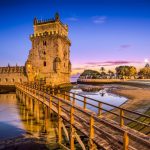Jeronimos Monastery, also known as Mosteiro dos Jerónimos, stands as one of the most remarkable symbols of Portugal’s Age of Discovery. Nestled in the Belem district of Lisbon, this architectural marvel has captivated visitors for centuries with its intricate design and historical significance. In this article, we will delve into the rich historical background of Jeronimos Monastery and explore key facts about its stunning architecture, offering a comprehensive guide for those eager to learn more about this iconic landmark.
The Rich Historical Background of Jeronimos Monastery
Jeronimos Monastery was commissioned by King Manuel I in 1501, commemorating Vasco da Gama’s successful voyage to India. The monastery not only served as a spiritual center but also as a symbol of Portugal’s navigational prowess during the Age of Discovery. The construction of the monastery was funded by a tax on eastern spices, reflecting the wealth that these explorations brought to Portugal.
One of the most significant historical aspects of Jeronimos Monastery is its association with the Order of Saint Jerome, a monastic order dedicated to religious scholarship and the guidance of sailors. The monks of this order provided spiritual counsel to seafarers and prayed for the success of their expeditions. This connection underscores the monastery’s role in supporting Portugal’s maritime ambitions during the 16th century.
During its long history, Jeronimos Monastery has witnessed numerous pivotal events, including the signing of the Treaty of Lisbon in 1859, which marked the end of the Iberian Union. Furthermore, it has served as the final resting place for several notable figures, including the navigator Vasco da Gama and the poet Luís de Camões. These historical layers add to the monastery’s rich tapestry, making it a vital part of Portugal’s cultural heritage.
Key Facts About Jeronimos Monastery’s Architecture
Jeronimos Monastery is a masterpiece of Manueline architecture, a unique Portuguese style that combines elements of Gothic, Renaissance, and Moorish design. This distinctive style is characterized by its ornate and intricate detailing, which can be seen throughout the monastery. The southern entrance, designed by João de Castilho, is particularly striking with its elaborate carvings depicting various saints, royal symbols, and maritime motifs.
The monastery’s interior is equally impressive, featuring a grand two-story cloister that exemplifies the Manueline style’s elegance and complexity. The cloister is adorned with delicate lace-like stonework, including intricate columns and arches that create a sense of harmony and balance. This space served as a place for meditation and reflection for the monks of the Order of Saint Jerome, further emphasizing the spiritual significance of the monastery.
Another architectural highlight is the Church of Santa Maria, which houses the tombs of Vasco da Gama and Luís de Camões. The church’s vaulted ceiling, supported by slender, tree-like columns, creates an awe-inspiring atmosphere. The blending of different stylistic influences within the church, from the Gothic ribbed vaulting to Renaissance decorative elements, showcases the versatility and creativity of Manueline architecture. This harmonious fusion of styles is a testament to the architectural brilliance that defines Jeronimos Monastery.
Jeronimos Monastery stands as a testament to Portugal’s rich history and architectural ingenuity. From its origins tied to the Age of Discovery to its intricate Manueline design, the monastery offers a fascinating glimpse into the past. Whether you are a history enthusiast, an architecture aficionado, or a curious traveler, a visit to Jeronimos Monastery is sure to be a memorable and enlightening experience. Its storied walls and breathtaking design continue to inspire awe and admiration, preserving the legacy of Portugal’s golden era for future generations.








